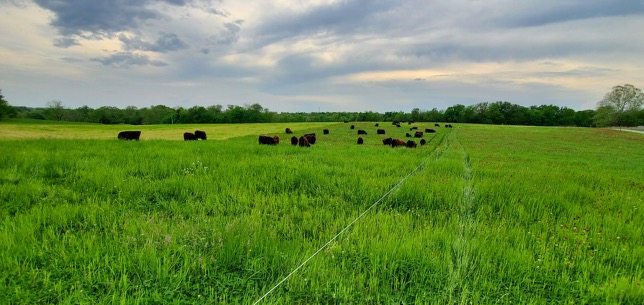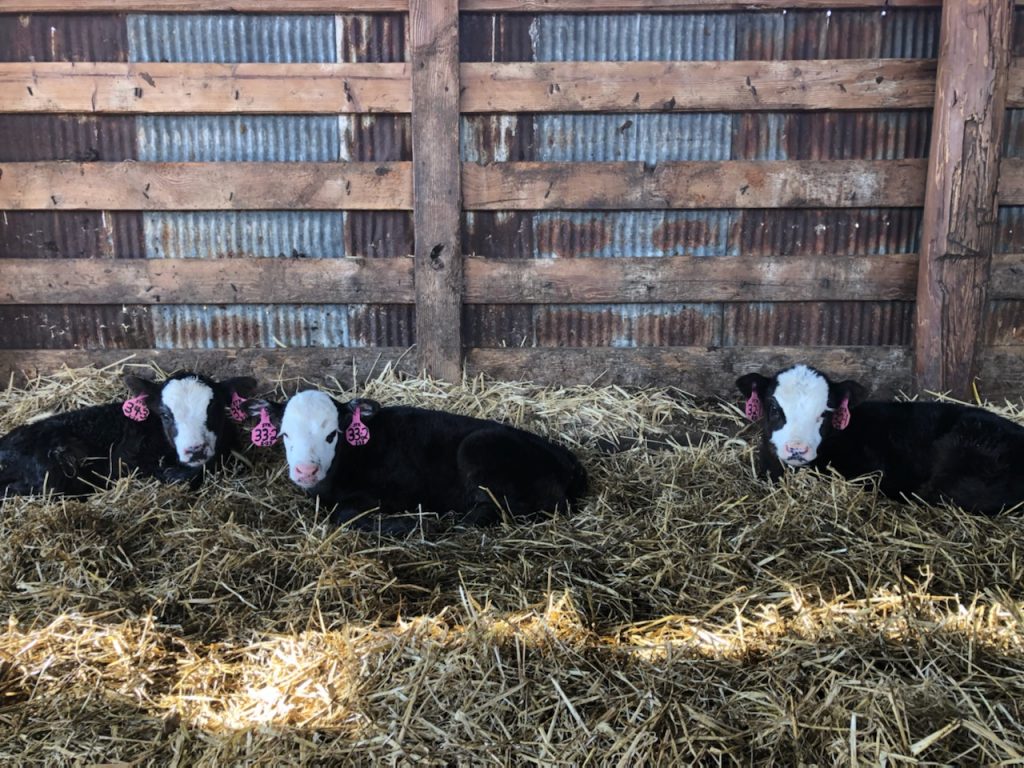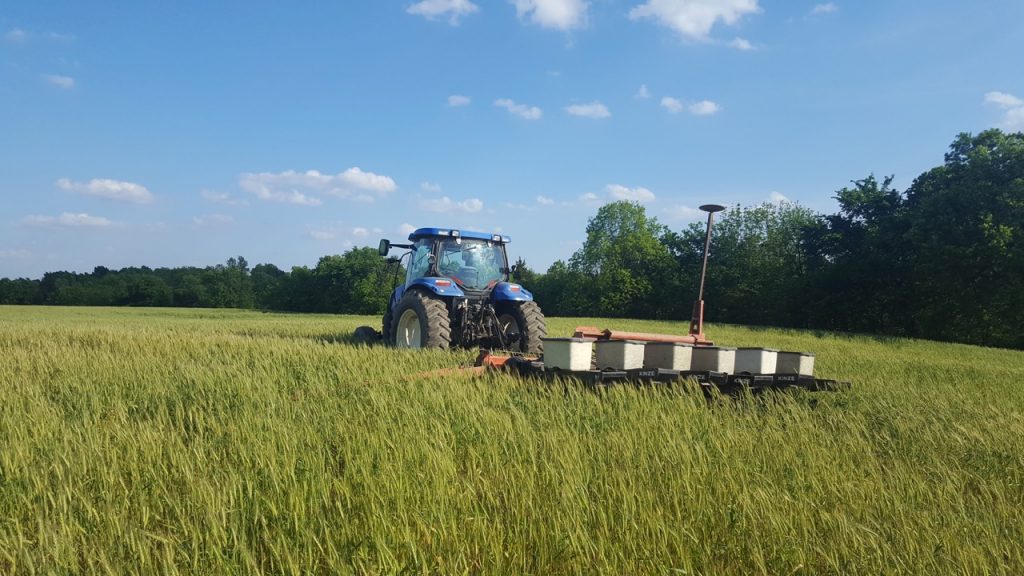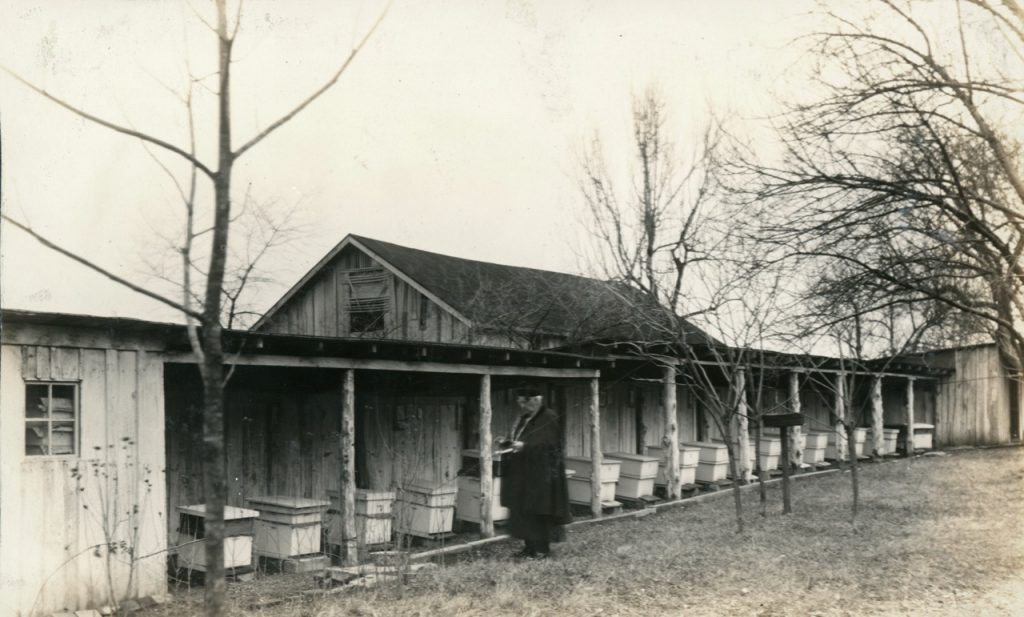Cultivation
Posted on March 16, 2020, by Loretto Community
Strip Grazing

For our grass-fed and finished beef cattle production we need superb quality forages to keep our animals growing. The most successful forages we have found have been summer and winter annuals which are planted each year and grow for 1 growing season. Here you see our calves grazing a winter annual mixture of wheat, rye grass, crimson clover, hairy vetch, winter peas, and rape. They are grazing this field with a technique called strip grazing. Using portable electric fencing wire and posts we are able to install subdivision fences within a pasture to manage where the cattle are grazing. In this field the cattle have already grazed several strips on the left of the field, are currently in a strip in the center, and will be moved to new strips on the right in 1-2 days.
Scheduled Calving Seasons

New baby calves are always a crowd favorite when we have farm tour groups, and you can see why! We use pink ear tags for the females and blue ones for the males, and we write numbers on the tags to identify each animal. Each cow is expected to produce a calf roughly every 365 days; we have some that calve in the fall and some in the spring. We limit the calving window by removing the bull from the fields with the cows, and do this so that we can devote our attention to checking the cows during the calving season multiple times daily in case there are any that have difficulties. With two separate calving seasons roughly six months apart we are able to have animals ready for slaughter throughout the entire year.
Planting Green

This shows a practice called “Planting Green” which means we are planting a cash crop directly into a green cover crop. This accomplishes one of the 5 tenants of soil health – have living roots in the soil 365 days of the year. We do have to use herbicides to kill this cover crop, but we are able to use less overall with this management style than with tillage and/or no cover crops. We also practice crop rotation which means we don’t grow corn or soybeans in the same field in back to back years, which also helps to reduce weed pressure and increases overall soil health. We’re continually looking beyond the production of corn and soybeans, actively pursuing alternative crops and land uses.
Beekeeping

Beekeeping is part of Loretto history as we see from this photo of Motherhouse chaplain, Rev. W. J. Howlett, blessing the bees in the 1920s. Four years ago we started keeping bees again. While we’re grateful for the honey, we’re also aware that honey bees are not native to Kentucky or to the US. Did you know that there are over 500 different kinds of native bees in Kentucky?
